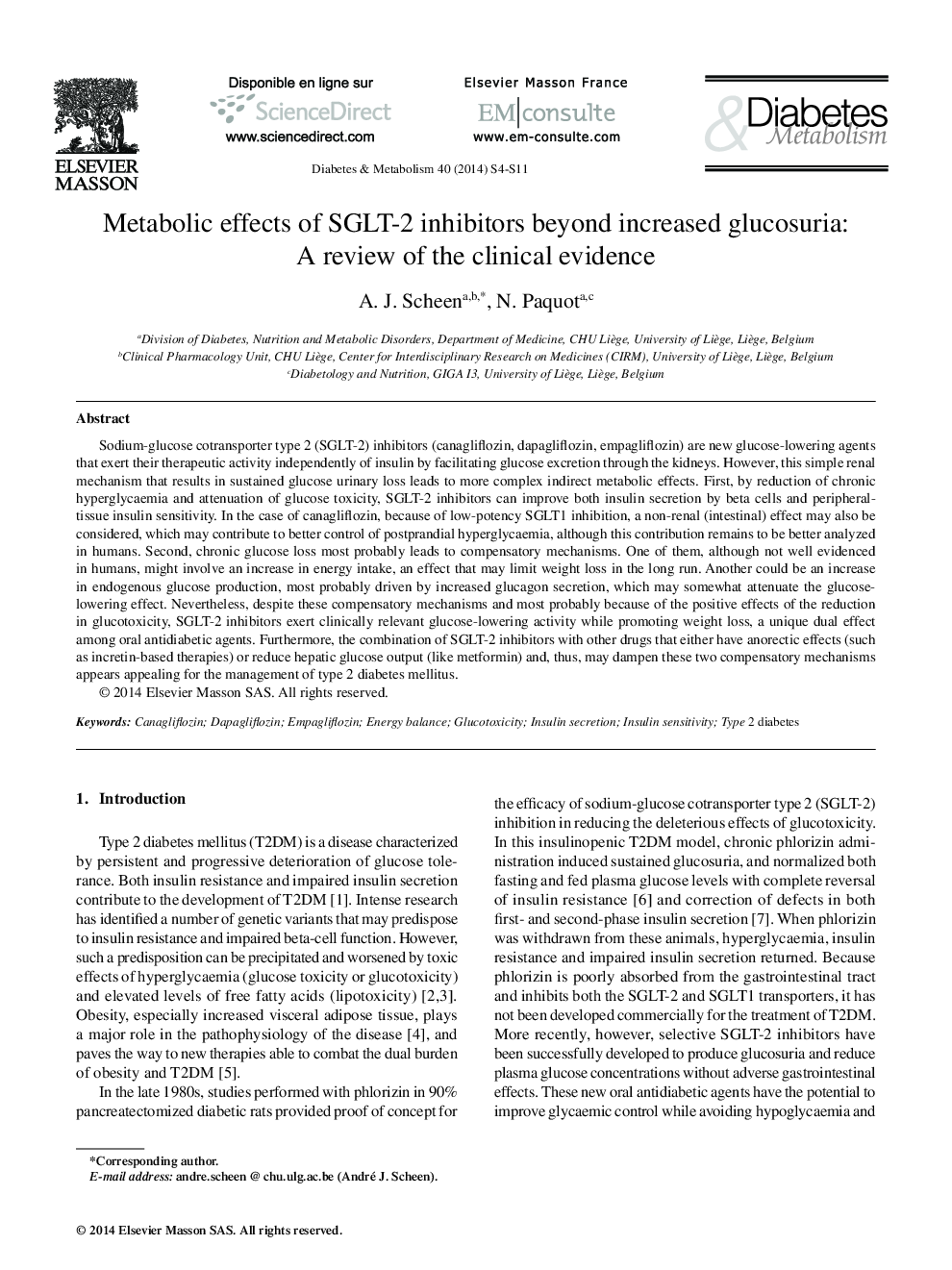| Article ID | Journal | Published Year | Pages | File Type |
|---|---|---|---|---|
| 3259376 | Diabetes & Metabolism | 2014 | 8 Pages |
Sodium-glucose cotransporter type 2 (SGLT-2) inhibitors (canagliflozin, dapagliflozin, empagliflozin) are new glucose-lowering agents that exert their therapeutic activity independently of insulin by facilitating glucose excretion through the kidneys. However, this simple renal mechanism that results in sustained glucose urinary loss leads to more complex indirect metabolic effects. First, by reduction of chronic hyperglycaemia and attenuation of glucose toxicity, SGLT-2 inhibitors can improve both insulin secretion by beta cells and peripheraltissue insulin sensitivity. In the case of canagliflozin, because of low-potency SGLT1 inhibition, a non-renal (intestinal) effect may also be considered, which may contribute to better control of postprandial hyperglycaemia, although this contribution remains to be better analyzed in humans. Second, chronic glucose loss most probably leads to compensatory mechanisms. One of them, although not well evidenced in humans, might involve an increase in energy intake, an effect that may limit weight loss in the long run. Another could be an increase in endogenous glucose production, most probably driven by increased glucagon secretion, which may somewhat attenuate the glucoselowering effect. Nevertheless, despite these compensatory mechanisms and most probably because of the positive effects of the reduction in glucotoxicity, SGLT-2 inhibitors exert clinically relevant glucose-lowering activity while promoting weight loss, a unique dual effect among oral antidiabetic agents. Furthermore, the combination of SGLT-2 inhibitors with other drugs that either have anorectic effects (such as incretin-based therapies) or reduce hepatic glucose output (like metformin) and, thus, may dampen these two compensatory mechanisms appears appealing for the management of type 2 diabetes mellitus.
